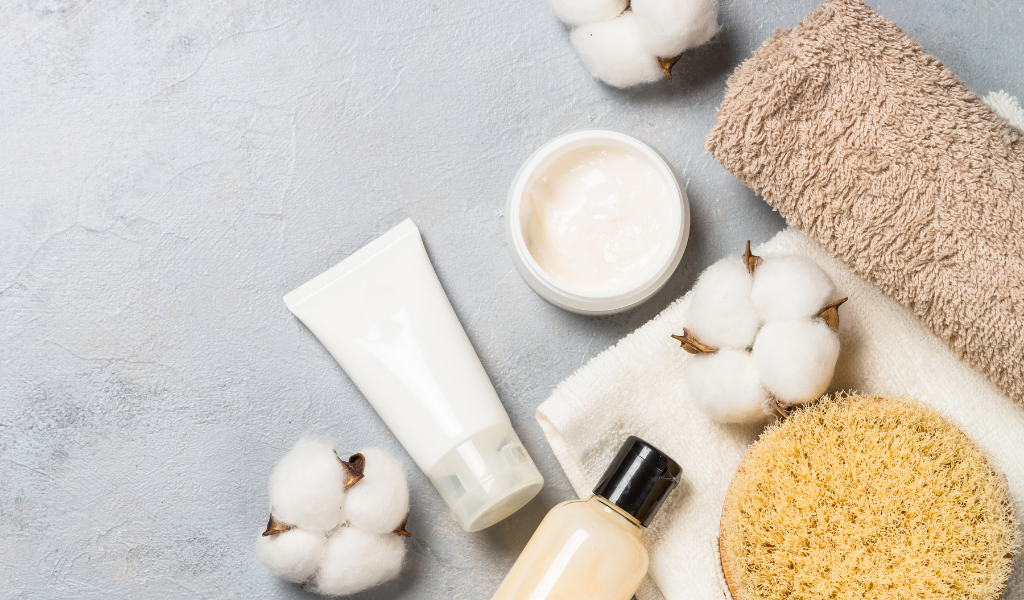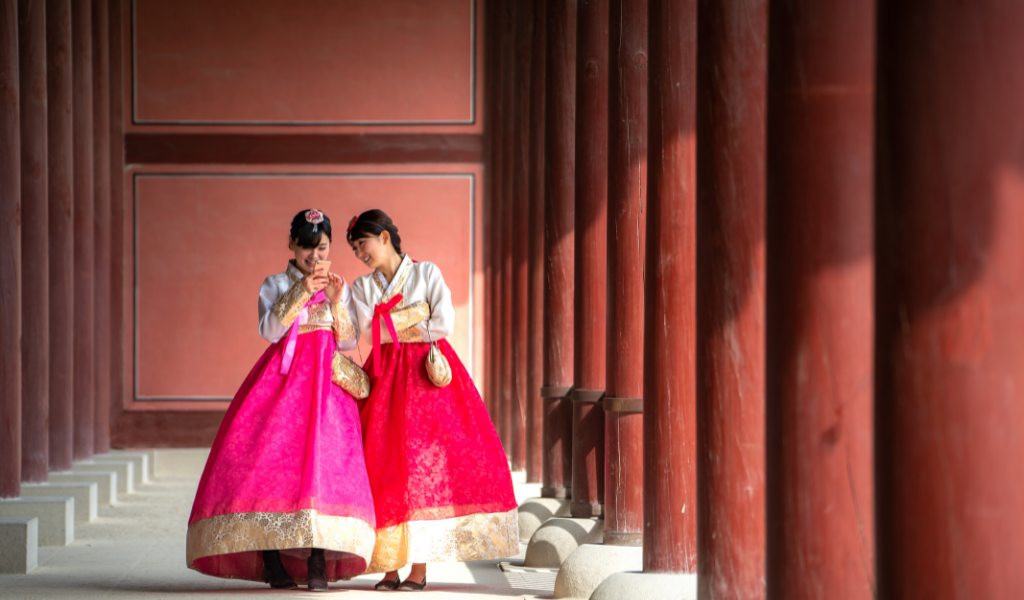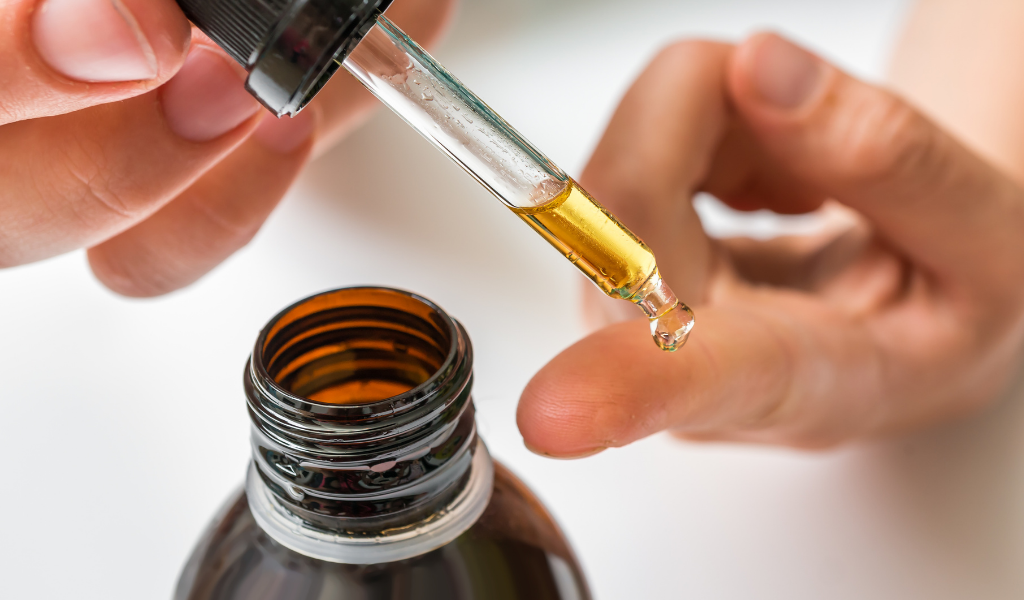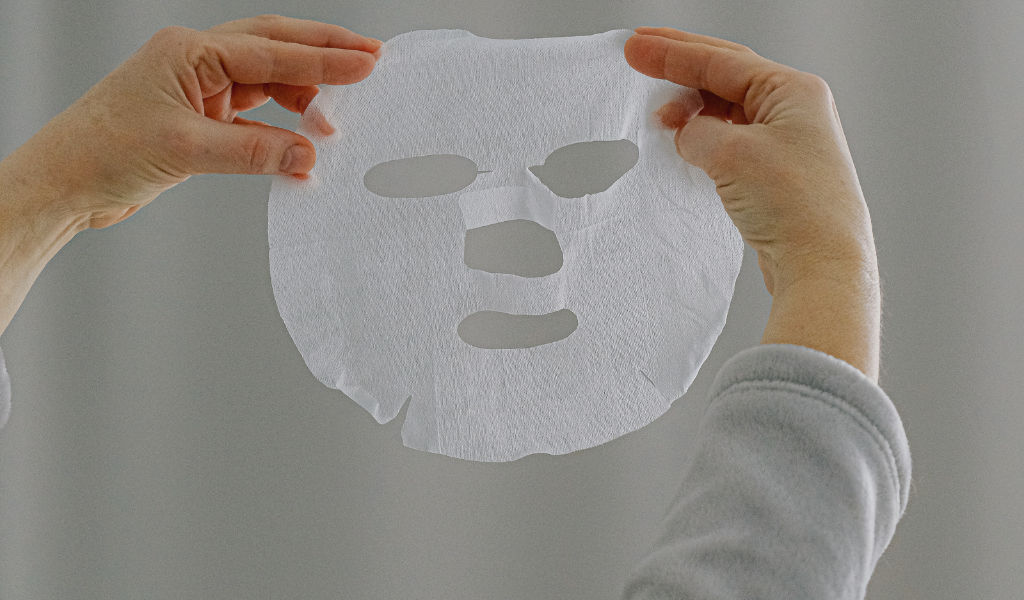No products in the cart.
The Benefits of 10 Step Korean Skincare

So, what’s the big deal about Korean Skincare? If you may have noticed walking into any beauty store within the past five years, Korean Beauty products, also known as “K-beauty,” have taken the North American and European skincare and beauty markets by storm. From an extensive skincare routine, with mysterious bottles and potions, we’re here to break down what exactly Korean skincare is, what are the benefits, and why it’s become so wildly popular.
History of Korean Skincare
For years, the ancient Korean beauty standard was to have bright and glowing skin. But how exactly did it begin? There is a history of female Korean beauty standards being heavily influenced starting very far back into Chosun era and Confucianism. The Chosun era is where we first find this ideal of bright, glowy skin on a Korean woman.
Through the different eras, trends changed only slighter, but makeup and cosmetics have always been a crucial part of Korean society. It is understood that in the Joseon Dynasty, outward appearance and inner appearance were one and the same. By this, it means that women were seen as having beautiful souls if their outsides were conventionally attractive, making a “beautiful woman” a more suitable addition to a family as a wife and mother because of her beautiful soul. The look of this was to wear minimal makeup because of a focus on modesty and humility, as well.
Fast forward, an influence of “The Modern Woman” came at a similar time as the Western “Flappers,” and Korean women chopped their hair into bobs, and wore one-piece skirts as opposed to traditional clothing such as Hanbok, which is traditional Korean clothing, consisting of an eogori jacket, baji pants, and the chima skirt. The women of this time wore heavier makeup and were criticized greatly by their country for having no regard for their family loyalty, or the fact they were being colonized by Japanese rule.
In contemporary times, Korean standards have somewhat swung like a pendulum and although Western trends are taken into consideration, Korean beauty trends are very specific to their region, with an ode to traditionist standards. For example, in the 2010s, a heavy contour, smoky eye, and mauve almost brown-colored lipstick look became popularized in the United States. In South Korea, bright skin with rosy cheeks, a bright peach or red lip, and minimal eye makeup are much more popular.
Why It’s Become So Popular
If Western brands don’t necessarily always follow Korean makeup style, Korean skincare is heavily idolized and advertised by brands all over the world. Why? A simple reason why Korean Beauty is so popular today is that not only do the products work, but a lot of them come from very natural ingredients. Tracing centuries back, cleansers were made from “jodu,” also known as ground mung beans, and lotions and oils were made from plants attributes. Many of these ingredients have continued into modern Korean skincare making the products both effective and much more gentle on the skin than more aggressive and chemically altered Western skincare.
Some Common Ingredients in Korean Skincare

Propolis
This gummy mixture is used by bees in the wall of honeycombs to seal and protect them from water and bacteria. As a natural antifungal, antibacterial, antioxidant, anti-inflammatory that fights aging and acne. It is also known to add hydration to dull and dry skin.
Acer Mono Sap
This is also known as Maple Tree Sap, and the allure is that the tree sap molecules are smaller than water molecules, meaning it has a more direct and more easily absorbed route to deliver antioxidants deeper into the skin.
Birch
The sap from birch trees, this ingredient is best used on dry skin in the winter months and is known for its hydrating properties, proteins, and antioxidants.
Snail Mucin
Yes. Snail Slime. And it’s one of the most commonly used Korean skincare products! Although not something you’d conventionally consider grabbing at the drugstore, this element locks in moisture, and obviously has a gel-like texture, which is popular because it’s comfortable on the skin.
Hyaluronic Acid
This acid is found in our bodies naturally but decreases as we age. Therefore, it’s a common ingredient so that we can replenish hydration and restoration to the skin, ensuring we do our best to prevent wrinkles.
Bamboo
One of the main components of collagen, silica, is found in bamboo, making it a no-brainer for skincare products. It’s also very popular in acne products for its restorative properties.
Pearl
Pearls are a great accessory for any woman, but they’re also helpful for your skin! Packed with amino acids, pearl can help produce collagen and act as a barrier to your skin from outside elements, such as pollution.
Sea Kelp
Packed with moisture, sea kelp contains fatty acids that are a powerhouse for your skincare routine. It is known as a firming agent, healing agent, exfoliating agent, and strengthening agent.
Yuza
Another great antioxidant, yuza helps with skin rejuvenation and to neutralize free radicals in outside elements.
Centella Asiatica
This ingredient is also known as Cica or Tigergrass, and its main properties include soothing, healing, and hydration. The components of this ingredient assist in repairing the skin cells, which are thought to reverse the skins of aging. It is also commonly used to combat redness or irritation in the skin from dry, winter climates.
Vitamin C/Niacinamide
Perhaps one of the more well-known antioxidants, vitamin C helps with skin rejuvenation, as yuza does. Vitamin C also does a fantastic job of acting as a brightening agent and bringing dull skin back to life. The great part of this ingredient is that you can apply it topically, but a lot of what you eat on a daily basis can contribute to great skin, as well.
Green Tea
This ingredient is more popular for acne treatment and those with oily skin for its antioxidant, anti-inflammatory, and antimicrobial properties. The polyphenols in the tea help reduce sebum production.
What The Ten Steps Include
The Korean 10-Step Skincare routine has been recently extremely popularized in the media. Some people swear by it, whereas others love to do it for the simple luxury of feeling like you’re at a spa in your very own home. Obviously whatever your preference, it’s smart to modify any routine based on your specific skin needs. For example, if you are really dry in the winter, you might benefit more from doing all ten steps, than when your skin produces more oil in the summer.
It’s important to use whatever products you decide on in the correct order, and it’s believed that some of the reason for the routine going viral is those cute cartoon infographics explaining the proper order began to see more popularity on Pinterest and Instagram.
We’ll take this time now to explain the order in which you should apply your skincare products, according to the Korean skincare methods. They tend to vary, based on preferences, but for the most part, many steps remain consistent, especially the first few.
Oil-Based Cleanser
One of the most unique features of Korean skincare is the “double cleanse” system. First, an oil cleanser is used to break up any makeup or residual product and oil production from the day. These cleansers can come in both balm form or an oily liquid that does not lather as a water-based soap would. If you’ve never used one before, it may take some time to get used to, because your skin does not feel “clean” after cleansing, however makeup and removed and the skin feels soft.
Water-Based Cleanser
A water-based cleanser is a face wash that most people are used to already having in their bathrooms. This type of cleanser is usually liquid or foam-based and will lather to remove dirt and other impurities from your skin that your oil-based cleanser cannot pick up. After you’re finished with this step, your skin should feel clean of all makeup and impurities from the day. If it doesn’t, you should reevaluate your cleansers to ensure they’re doing the best possible job to remove all makeup and oil before moving forward.
Exfoliator
There are a few different types of exfoliators you can use, both of which are effective for different reasons. Most western rituals are used to harsh, physical exfoliants, which can be too damaging for the skin at times. Korean skincare takes a much gentler approach, usually chemical exfoliants and some mild physical exfoliants. This is an example of a step that is not recommended daily, for the best exfoliation results come from only utilizing one to two times per week. Exfoliating weekly will remove dead skin cells and allow the other products to be more easily absorbed, but over-exfoliating may cause your skin to dry, and become easily sensitive or irritated.
Toner
Western toner and Korean toner have a stark difference. Popular toners in western culture tend to leave a chemical, slightly burning sensation, which allows consumers to believe “it’s working,” similar to the minty sensation, that isn’t required of toothpaste. However, the toner in Korean skincare is really only necessary to balance your pH and prep the skin for what’s to come. There’s no need to burn in order to cleanse with a toner because we’ve cleansed in the first few steps.
Essence
So, this may be where we start to get a little confusing. Essence and Serum can often be translated directly or they can have complete differences and it really depends on the marketing. It’s a little rarer to find an “essence” in the western market because it’s not quite a serum, which is much more popularized. The big difference is that an essence is technically more lightweight, and used as an extra layer of hydration before adding more concentrated treatments. These essences usually aid in long-term hydration, but also in anti-aging as well. Either way, essences, and serums usually come in a glass bottle with a dropper.
Treatments
Okay, now we’ll talk about serums. Sometimes, this step is referred to as serums, ampoules, or emulsions, as well. It’s basically a highly concentrated goo that can usually be found in a glass bottle with a dropper, as well. When using these types of products, ensure the glass dropper doesn’t actually touch your face or hand, so that you can prevent bacteria from your skin to enter and start growing inside the bottle.
Sheet Mask

Ladies & gentlemen: I present to you, the “fun” part of your 10 step Korean skincare routine: sheet masks! Sheet masks are hugely popular in South Korea, Japan, and many other Asian countries. This is the element that will absolutely make you feel as though you’re relaxing at a spa. Hundreds of brands produce their own, but they almost always have a cotton sheet soaked in liquid. You are to keep the mask on for about 15-20 minutes, depending on the wetness, remove it before it completely dries, and pat in the remaining liquid from the package onto your face. Some people sheet mask once a week, and others prefer them daily. At this point, you should be so hydrated you look shiny and glowy!!
Eye Cream
Your undereye area is one of the most sensitive on your face, often being one of the first to show signs of aging at your crow’s feet. It is known that certain eye creams can help with dark circles and puffiness, however, your inner health is truly important with this as well. Ensuring you are drinking enough water, getting enough sleep, and keeping your sodium intake to a minimum will assist with the look of puffiness and dark circles in the eyes.
However, eye creams will help with hydration and can’t hurt when fighting aging signs.
Moisturizer
One of our final steps and the last step of a night routine will be a moisturizer. A lot of the ingredients we discussed earlier will be great in this stage. It’s important so that we locked in all the products used in the previous few steps and ensure all-day hydration. At night, there are gel-based sleeping masks that can be used as a moisturizer so that you wake up with bright, glowy skin. These are often translated to “sleeping packs.”
Sun Protection
And finally: sun protectant aka sunscreen. Now, depending on how much you want, you can find a good moisturizer with sunscreen already in it, but many lightweight comfortable sunscreens are not hard to add an extra layer of protection. This goes without being said, but I will say it anyway: you don’t need to do this step at nighttime. However, you do need to apply sunscreen daily, even when you think you will be indoors for the majority of the day.
Does the 10 Step method work?
Finally, we’ve reached the moment you’ve all been waiting for: does this method actually work, and/or is it necessary? So, one of the first things we must understand, and we kind of already went over: all 10 steps are not necessary for every single person every single day. As mentioned, you don’t need sunscreen at nighttime or an exfoliant more than a couple of days a week. Because of this, the answer to “are all 10 steps necessary” is automatically a no. Always talk to your dermatologist or a professional about what will be best for you. However, there are many benefits to playing around with these 10 elements and incorporating them into your skincare routine.
How to Start on your 10 Step Journey
The first order of business is to find out what your skin type is. Most skin types can fall between dry, combination, oily, and acne-prone. A lot of ingredients we listed above are used to target specific skin types, for example: if you are dry, it might be a good idea to gravitate towards products with snail mucin and if you are acne-prone, propolis can help, since it’s an anti-bacterial.
Once you start to find a few products with ingredients you like, you can piece them together as if you’re the conductor of a magnificent orchestra. The key here is to not get overwhelmed and not to introduce too many new products at once. As you slowly introduce new products into your life, you will begin to understand how your skin reacts positively or negatively to each new product. American beauty stores, such as Sephora or Ulta, will often take returns even if the product has been opened. If you try and new product and don’t love it, or if your skin reacts negatively despite raving reviews, please return it to where you purchased it and try something new!
Now get out there, and go have some skincare fun, using some traditional Korean skincare techniques. Thanks for reading.
Sources:
- https://www.youtube.com/watch?v=QocCzJNcLxQ
- https://www.coursera.org/lecture/social-change-korea/3-1-shifting-beauty-standards-and-aesthetics-from-joseon-to-colonial-period-54ggW
- http://www.koreatimes.co.kr/www/news/culture/2013/07/203_129776.html
- https://umma.io/blog/10-korean-skincare-ingredients-you-need-to-know/
